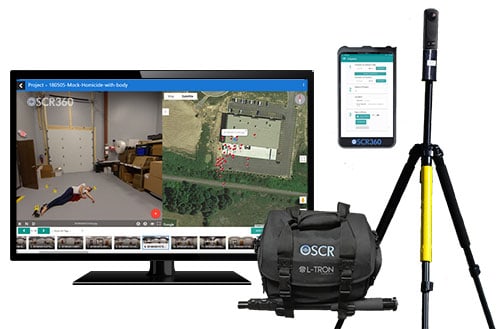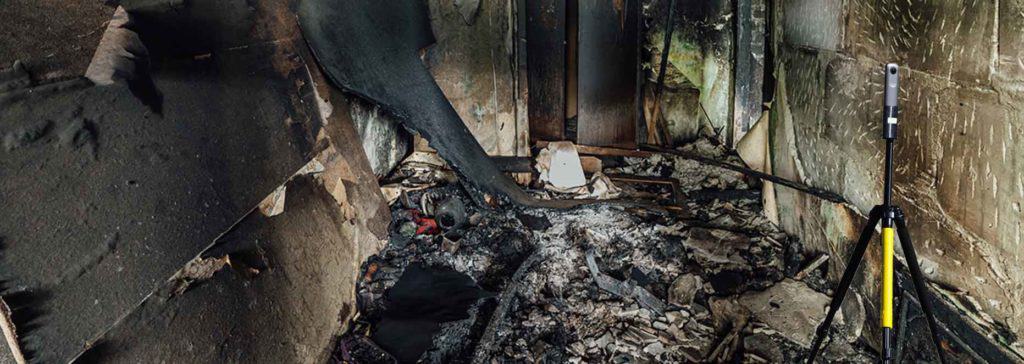
First responders encounter a variety of dangerous situations every day in the quest to keep the people in their community safe.
When it comes to fire service professionals, unsafe structures and environments continuously pose a risk to their health, safety, and well-being. Firefighters are in danger while they work to extinguish each blaze and rescue victims who may be trapped inside. The hazmat team is vulnerable when responding to chemical spills and explosions. The search and rescue team enters precarious situations that no one else has the capability to handle. Investigators put themselves at risk when they are exposed to environmental conditions and the structural damage that remains after the emergency response team has cleared the scene.
OSCR360 was designed to fully capture the details of every type of environment, without putting your manpower in harm’s way. When you have an unsafe scene that you have to investigate or document, OSCR360 can “enter” without risking your team. If you’re unsure of what you might encounter in an attic, crawlspace, basement, or similar location, OSCR360 can provide a sneak peek. If there is a location too small for a human to physically fit, OSCR360 can look through a cracked door, underneath a vehicle, or sit in the center of a small room.
When you’re facing tough scenarios, let OSCR360 be your eyes.
Structural Collapse
Burn damage weakens structures, and depending on the location and severity of a fire, homes and buildings can be damaged to the point where the floor can no longer safely support weight. Whether the first or second floor is damaged, if the floor is not structurally sound, fire personnel should never enter.
Danger can also come from above, so personnel should be aware of the potential for roof collapse. Safety must always be at top of the mind at fire scenes. Any location that may be insecure for human entry, such as a burned-out home or building, can safely be alternately accessed using OSCR360 on a tripod, through any small opening or window. The OSCR360 camera is self-righting, so it can be placed within a scene at any angle and the photos captured will be upright.
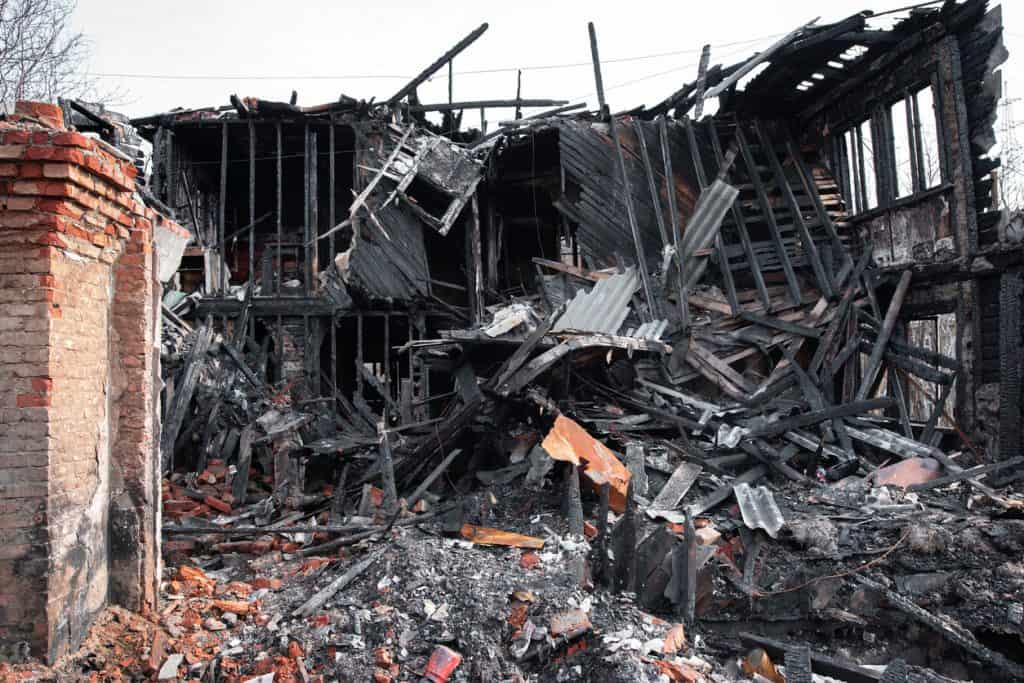
For instance:
- When the floor has been weakened or completely destroyed, place OSCR360 through a window to capture the burnt remains of a home.
- If unsure of floor stability, look at the joists below the floor using OSCR360 to see if they appear stable.
- Following a home or apartment fire, cut a small hole in floor to drain water and then stick OSCR360 in upside down to photograph the entire basement rather than risking ceiling collapse while in the basement.
Training Opportunities
OSCR360 provides a wide variety of virtual training opportunities for fire service personnel, without exposing the entire group to the potential safety hazards present at a physical scene. In-house training opportunities via OSCR360 include:
- Capturing scenes to provide future training opportunities for those who were involved in fighting the fire. Review, reflect, and ask questions so your team can continue to learn. Training with OSCR360 also provides those who were not on duty during that shift the chance to train according to the circumstances surrounding that specific scene.
- When your department has access to a condemned or donated house, photograph both the interior and exterior prior to conducting a live burn. Capture the layout and any furniture or items within the home. Later, compare your original photographs to a set of post-burn photographs to look for burn patterns.
- Capture any and all imagery of public spaces in a safe and controlled manner with OSCR360. Create emergency plans and understand the processes for responding to a potential emergency.
- Use OSCR360 anywhere you want to set – and capture – a baseline before physical training courses.
- Train in fire behavior, ventilation strategies, search and rescue techniques, and other areas. Learn more here.
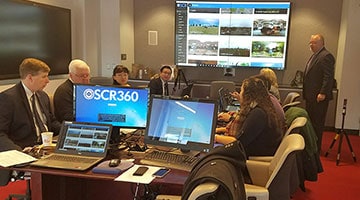
Accessing Unsafe Structures and Potentially Dangerous Environments
Whether a scene is full of debris, exposed electrical wiring, or other potential hazards, the safety of your personnel should always come first. For some scenes, it can be difficult to predict the environment prior to entering. Snap a 360-degree photo with OSCR360 to help determine if the environment is safe for human entry. Be on the lookout for areas that may cause someone to slip, trip, or fall, as well areas that may expose those on scene to be burned, shocked, or injured by a falling object.
- Suspend the camera over an area or into a hole (i.e. crawlspaces and basements), then view the scene from the OSCR360 tablet to decide whether the area appears safe or unsafe to physically enter.
- Any room that is flooded with standing water following a fire may be unsafe to enter, particularly when wires are exposed. Again, use OSCR to document these scenes, and keep your personnel outside.
- Small spaces like mobile homes, attics, crawl spaces, closets, and powder rooms can be virtually explored by placing OSCR360 on a tripod and sticking it into the cramped quarters. Even motor vehicles can be accessed with OSCR360 by placing the camera underneath a car, on the floorboards of a vehicle, on the center console, or under a seat.
- Access the area above a dropped ceiling by placing OSCR360 through the ceiling tiles.
HazMat or Drug-related Scenes
Environments harboring toxic chemical fumes or liquid spills pose a major health hazard to anyone who enters. Entry should never be permitted without a full HazMat suit. From commercial and industrial properties to drug houses and meth labs in the middle of the woods, OSCR360 can quickly and safely capture the images you need, no matter the conditions.
Remember, OSCR360 is never a replacement for wearing the proper PPE.
- When placed inside a toxic environment, OSCR360 captures comprehensive 360-degree spherical photos in a matter of moments, preserving the overall scene to virtually re-visit later.
- Those at a HazMat scene are exposed to carcinogenic chemicals and other respiratory hazards. Dramatically reduce time spent exposed to dangerous vapors, asbestos, and more by photographing the scene with OSCR360.
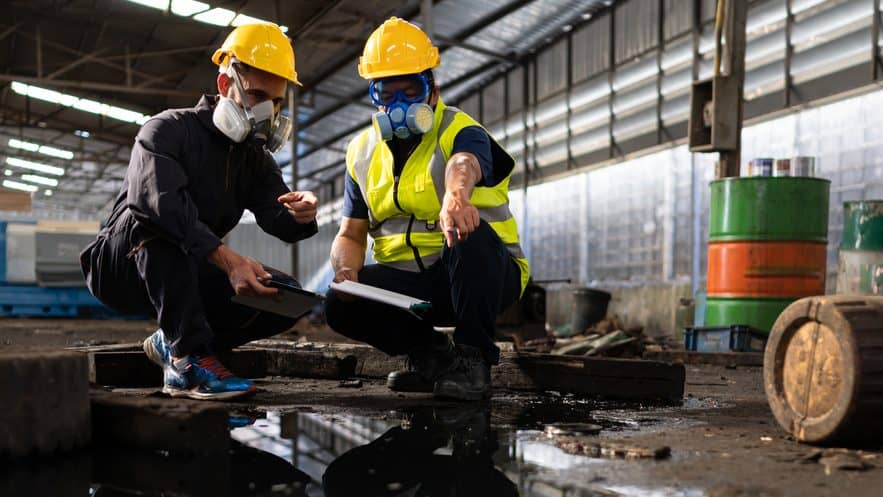
Why OSCR360?
OSCR360 offers unlimited training for your fire agency, the ability to revisit any scene over and over, and can assist in the documentation and fire investigation process.
OSCR360 is lightweight, easy to transport, and requires almost no additional training. The system works quickly and thoroughly. OSCR360 assists with accessing unsafe structures and small spaces, allowing you to peek around an unknown environment prior to physically entering, or to use as an alternative to human entry. Attach OSCR360 to its tripod and put the capture kit through a door, window, hole, or other small opening.
If there is any question as to whether a scene is safe for human entry, always err on the side of caution. Remember that post-fire scenes are degrading constantly, due to smoldering rubble, running water from burst pipes, weather conditions, and more. Let OSCR360 be your eyes, while you stay safely out of harm’s way.
